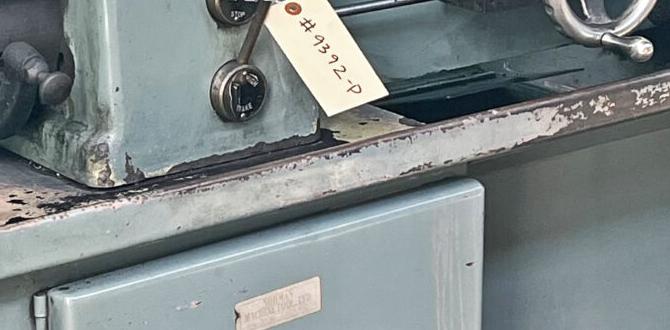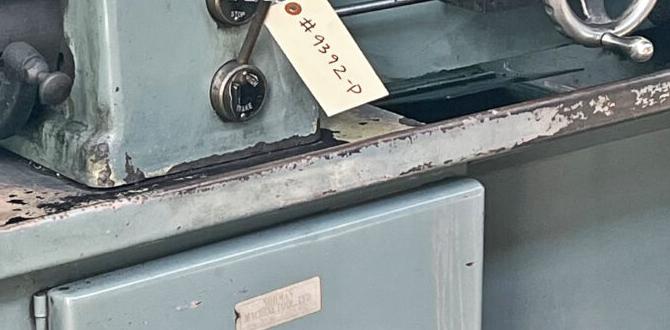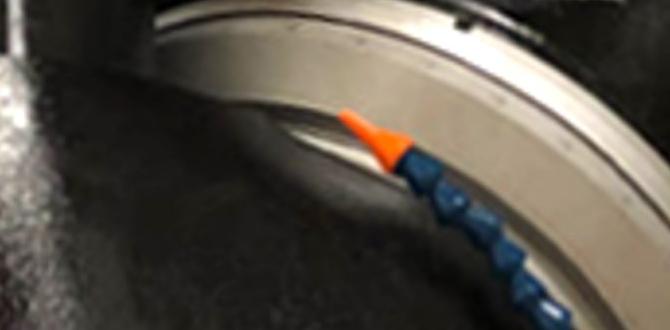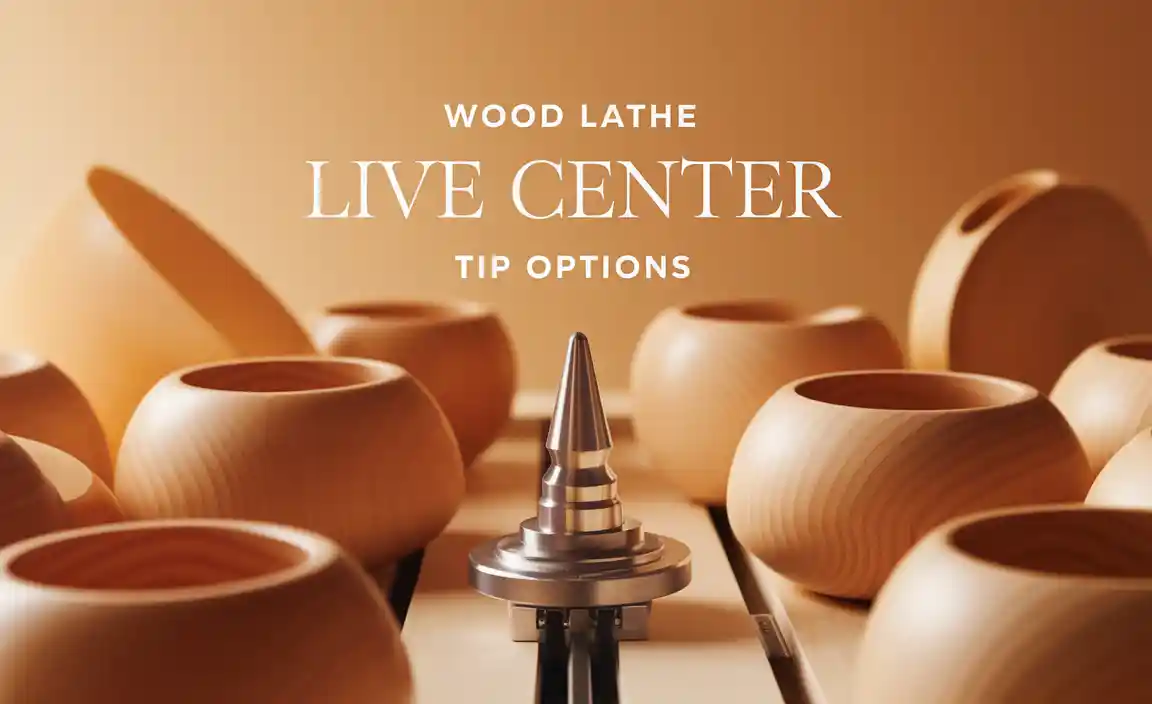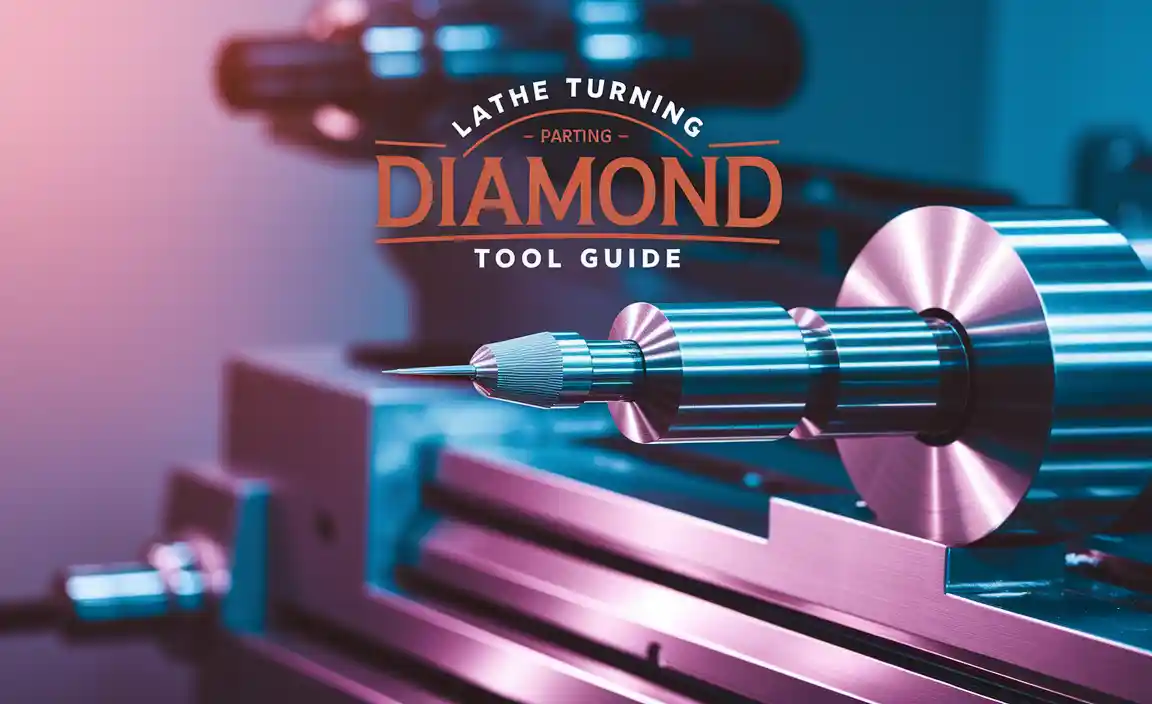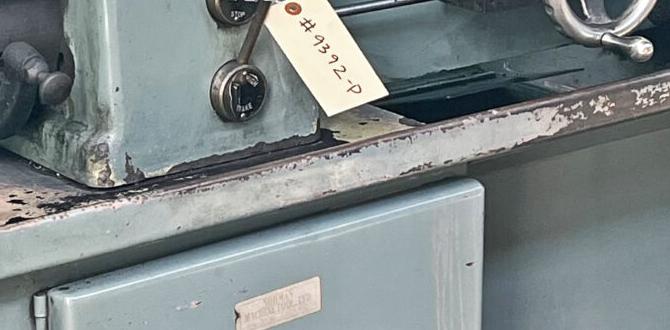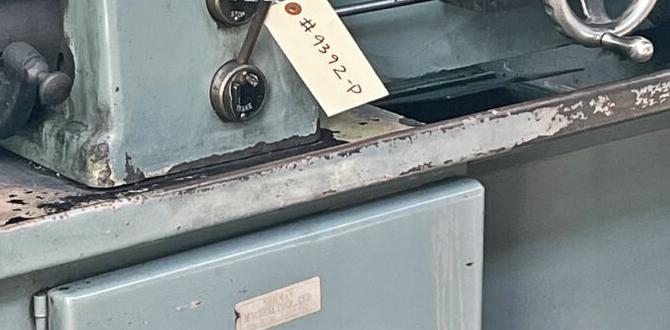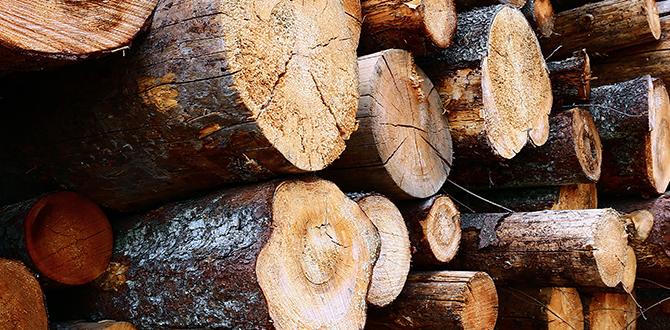Imagine a craftsman carefully choosing the right tool for their project. Choosing the correct lathe tool post can make a huge difference. It can affect how smoothly a job goes and the final outcome. Today, we will explore these lathe tool post types in detail. By the end, you will understand which type suits your needs best. So, let’s dive into this fascinating world of lathe tool posts!
Lathe Tool Post Types Explained: A Comprehensive Guide
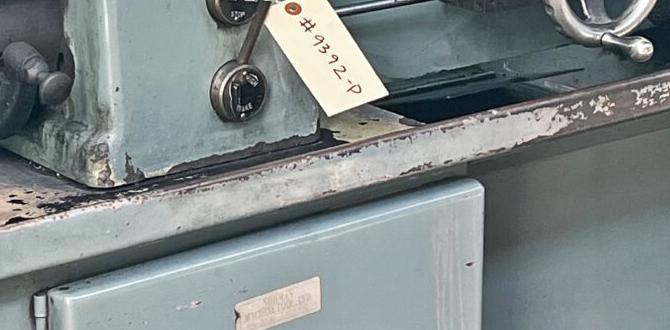
Lathe Tool Post Types Explained
Understanding lathe tool post types can make your woodworking or metalworking projects smoother. There are several types, such as the quick-change tool post and the wedge-type tool post. Each has unique benefits. For instance, quick-change tool posts let you switch tools quickly. Imagine saving time while crafting! Knowing these options can enhance your skills. A surprising fact: using the right tool post can even improve your precision. Explore these types to elevate your lathe work.Understanding Lathe Tool Posts
Definition and purpose of tool posts. Importance of tool posts in lathe operations.A lathe tool post is a small but essential part of a lathe machine. It holds the cutting tool securely in place during operations. Without it, the tool could shake or move, leading to poor cuts. Tool posts are important because they help ensure accuracy and safety. A stable tool post allows for smooth and precise machining, making tasks easier and faster. Think of it as the backbone of your lathe setup.
Why are tool posts important in lathe operations?
Tool posts keep cutting tools steady and prevent mistakes. Proper tool support enhances performance and increases lifespan. Plus, it helps in different projects like turning, drilling, and threading.
Key purposes of tool posts:
- Provide stability for accurate cuts
- Improve safety during operations
- Increase efficiency and productivity
Fixed Tool Posts
Description and components. Advantages and disadvantages. Common applications and best practices.Fixed tool posts are simple but effective. They hold the cutting tool steady during machining tasks. Key parts include the body, tool holder, and a clamping mechanism. One big perk? They’re very stable! However, they lack flexibility, which can be a drawback. Machines using fixed tool posts are often found in workshops, making them ideal for tasks like turning or facing. To use them best, keep them clean and adjust the heights properly. Remember, a clean workspace is a happy workspace!
| Advantages | Disadvantages |
|---|---|
| Stable cutting | No adjustment |
| Easy to use | Less versatility |
| Cost-effective | Requires precise setup |
Quick-Change Tool Posts
Explanation of quickchange mechanism. Benefits of using quickchange tool posts. Examples of popular quickchange systems.Switching tools on a lathe can feel like a race against time. The quickchange tool post makes it easy! With a simple lever action, you can change tools in seconds. This means more time making chips and less time fiddling around. What’s not to love?
Using a quickchange system brings benefits like faster setups and increased accuracy. Imagine being able to swap tools without losing your place—now that’s magic! Popular quickchange systems include brands like Aloris and Dorian, both loved by machinists. They’re the superheroes of the tool post world.
| Quickchange System | Features |
|---|---|
| Aloris | Fast tool change, strong build |
| Dorian | Versatile and reliable |
Toolbox Tool Posts
Features of toolbox tool posts. Situations where toolbox posts are most effective. Customization options available.Toolbox tool posts are compact and versatile. They fit easily on various lathe machines. Features include sturdy clamps and easy adjustments. These posts work best in small workshops or home setups. They provide fast tool changes, which saves time. Users enjoy several customization options to make them unique, like:
- Different sizes
- Variety of materials
- Special attachments
This flexibility makes toolbox tool posts popular among hobbyists and professionals alike.
What are toolbox tool posts?
Toolbox tool posts are specialized devices used to hold and adjust tools on lathes, enhancing efficiency and productivity.
Choosing the Right Tool Post for Your Lathe
Factors to consider (lathe size, type of work). Cost vs. performance analysis. Recommendations for beginners versus experienced users.Choosing the right tool post can make a big difference. Think about the lathe size and the type of work you do. Smaller lathes need lighter tool posts. If you work with big pieces, you’ll need something sturdier. Also, consider cost vs. performance. Cheaper tool posts may break easily. For beginners, a simple design works well. But experienced users might want more features for precision. Remember, the right tool post helps you create better projects!
What should beginners look for in a tool post?
Beginners should choose a tool post that is easy to use and affordable. Look for basic features that are reliable.
Key tips for beginners:
- Start with a simple design.
- Consider durability.
- Check user reviews.
Maintenance and Care for Tool Posts
Routine maintenance practices. Troubleshooting common issues. Enhancing the lifespan of tool posts.Keeping your tool posts in top shape is key for a smooth turning experience. Regularly check for dirt and grime; they love hiding in crevices! A quick wipe can prevent a tough day. If you notice any strange sounds or wobbles, it might be a good time for some troubleshooting. Don’t ignore these signs! To make your tool posts last, remember to lubricate them. Think of it as giving them a cozy massage after a long day of work.
| Maintenance Tips | Common Issues | Lifespan Enhancers |
|---|---|---|
| Regular cleaning | Wobbling tool post | Frequent lubrication |
| Check tightness | Odd noises | Avoid extreme temperatures |
| Inspect wear and tear | Rust formation | Store properly |
Give your tool posts some love, and they’ll return the favor with great performance!
Future Trends in Lathe Tool Post Technology
Innovations and advancements on the horizon. How technology is changing tool post designs. Predictions for the future user experience.New ideas in lathe tool posts are exciting! As technology improves, we see better designs. New materials are lighter and stronger. Smart tools can adjust automatically. This means work will be faster and easier. Here are some trends to watch:
- 3D Printing: Custom parts can be made quickly.
- Smart Sensors: These help monitor performance.
- Ergonomic Designs: They ensure comfort and safety.
In the future, users will enjoy more features. Tools will be safer and work will be more precise. What new tools will you discover next?
What are the latest trends in lathe tool posts?
Latest trends show that technology is evolving quickly. Expect smarter, lighter, and easier-to-use tool posts soon.
Conclusion
In summary, understanding lathe tool post types helps you choose the right tool for your projects. Quick-change posts save time, while fixed posts provide stability. Remember to consider your needs and project size before selecting a post. We encourage you to explore more resources and practice using different types to improve your skills. Happy turning!FAQs
Sure! Here Are Five Related Questions On The Topic Of Lathe Tool Post Types:Sure! Here are five questions about lathe tool post types. 1. What is a tool post? A tool post is a part on a lathe machine that holds the cutting tool in place. 2. Why do we need different types of tool posts? Different types help us use various tools for different jobs easily. 3. What is a quick-change tool post? A quick-change tool post lets you swap tools fast without using too many tools. 4. How does a solid tool post work? A solid tool post holds the tool tightly, making it great for heavy cutting. 5. Can we make our own tool posts? Yes, you can! With some skills, you can create a custom tool post for your lathe.
Sure! Please provide the question you’d like me to answer, and I’ll be glad to help you with it.
What Are The Main Types Of Lathe Tool Posts, And How Do They Differ From Each Other?There are three main types of lathe tool posts: the wedge type, the cam lock type, and the quick change type. The wedge type uses a wedge to hold the tool tight. The cam lock type uses a lever and a cam to secure the tool. The quick change type lets you switch tools fast, saving time. Each type has its own way of working, but they all help hold tools firmly while you cut or shape materials.
How Does The Design Of A Quick-Change Tool Post Improve Efficiency In Machining Operations?A quick-change tool post lets you swap tools fast. This saves time because you don’t need to do big setups for each tool. You can switch tools in just a few moments, so you work faster. With this smart design, you get more done in less time!
What Are The Advantages And Disadvantages Of Using A Compound Tool Post Compared To A Standard Tool Post?A compound tool post lets you move the tool in more directions. This helps you make more complex cuts. The advantage is you can do more types of work easily. However, it can be harder to set up and use. A standard tool post is simpler but limits what you can do.
How Do You Determine Which Type Of Tool Post Is Best Suited For A Specific Turning Application?To choose the best tool post for turning, you first look at what you are making. You need to consider the size and shape of your workpiece. Then, think about the cutting tools you will use. Some tool posts hold tools better for heavy cutting, while others work for smaller, detailed jobs. Finally, pick a tool post that fits your machine and your project needs.
What Maintenance Practices Are Recommended To Ensure The Longevity And Accuracy Of Lathe Tool Posts?To keep lathe tool posts working well, you should clean them regularly. Wipe off dirt and oil with a soft cloth. Use a little oil on the moving parts to keep them smooth. Check for rust and remove it if you see any. Tighten any loose screws to keep everything in place.
{“@context”:”https://schema.org”,”@type”: “FAQPage”,”mainEntity”:[{“@type”: “Question”,”name”: “Sure! Here Are Five Related Questions On The Topic Of Lathe Tool Post Types:”,”acceptedAnswer”: {“@type”: “Answer”,”text”: “Sure! Here are five questions about lathe tool post types. 1. What is a tool post? A tool post is a part on a lathe machine that holds the cutting tool in place. 2. Why do we need different types of tool posts? Different types help us use various tools for different jobs easily. 3. What is a quick-change tool post? A quick-change tool post lets you swap tools fast without using too many tools. 4. How does a solid tool post work? A solid tool post holds the tool tightly, making it great for heavy cutting. 5. Can we make our own tool posts? Yes, you can! With some skills, you can create a custom tool post for your lathe.”}},{“@type”: “Question”,”name”: “”,”acceptedAnswer”: {“@type”: “Answer”,”text”: “Sure! Please provide the question you’d like me to answer, and I’ll be glad to help you with it.”}},{“@type”: “Question”,”name”: “What Are The Main Types Of Lathe Tool Posts, And How Do They Differ From Each Other?”,”acceptedAnswer”: {“@type”: “Answer”,”text”: “There are three main types of lathe tool posts: the wedge type, the cam lock type, and the quick change type. The wedge type uses a wedge to hold the tool tight. The cam lock type uses a lever and a cam to secure the tool. The quick change type lets you switch tools fast, saving time. Each type has its own way of working, but they all help hold tools firmly while you cut or shape materials.”}},{“@type”: “Question”,”name”: “How Does The Design Of A Quick-Change Tool Post Improve Efficiency In Machining Operations?”,”acceptedAnswer”: {“@type”: “Answer”,”text”: “A quick-change tool post lets you swap tools fast. This saves time because you don’t need to do big setups for each tool. You can switch tools in just a few moments, so you work faster. With this smart design, you get more done in less time!”}},{“@type”: “Question”,”name”: “What Are The Advantages And Disadvantages Of Using A Compound Tool Post Compared To A Standard Tool Post?”,”acceptedAnswer”: {“@type”: “Answer”,”text”: “A compound tool post lets you move the tool in more directions. This helps you make more complex cuts. The advantage is you can do more types of work easily. However, it can be harder to set up and use. A standard tool post is simpler but limits what you can do.”}},{“@type”: “Question”,”name”: “How Do You Determine Which Type Of Tool Post Is Best Suited For A Specific Turning Application?”,”acceptedAnswer”: {“@type”: “Answer”,”text”: “To choose the best tool post for turning, you first look at what you are making. You need to consider the size and shape of your workpiece. Then, think about the cutting tools you will use. Some tool posts hold tools better for heavy cutting, while others work for smaller, detailed jobs. Finally, pick a tool post that fits your machine and your project needs.”}},{“@type”: “Question”,”name”: “What Maintenance Practices Are Recommended To Ensure The Longevity And Accuracy Of Lathe Tool Posts?”,”acceptedAnswer”: {“@type”: “Answer”,”text”: “To keep lathe tool posts working well, you should clean them regularly. Wipe off dirt and oil with a soft cloth. Use a little oil on the moving parts to keep them smooth. Check for rust and remove it if you see any. Tighten any loose screws to keep everything in place.”}}]}
